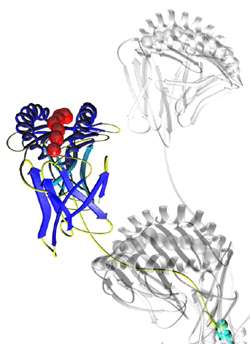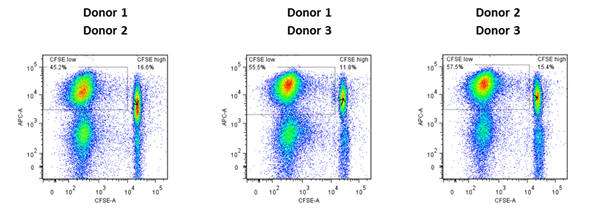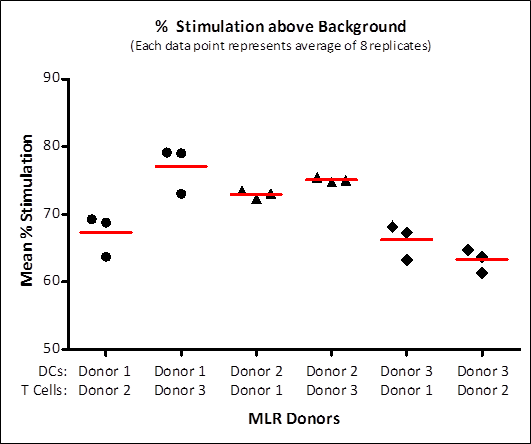Your basket is currently empty!
Special Assay Service
The Special Assay Service
bespoke immunology assays based on ProImmune’s proven assay platforms
 |
ProImmune offers unique assays with a broad range of applications in research immunology, including:
• Assessing immune modulation • Managing drug immunogenicity risk • Characterizing responses to new antigens • All aspects of immune monitoring • Comparison of patients to healthy donors Researchers often approach us to seek assistance in the design of bespoke assays. Because of the breadth of experience that we offer, our standard assays can often be readily adapted to suit your custom requirements. Our customer service team are Ph.D-educated immunologists, able to understand your requirements in detail, and work with you to find the most effective solution for your needs. |
Example: Mixed Lymphocyte Reaction Assays
The principle of a mixed lymphocyte reaction (MLR) is that T cells from one donor will proliferate in the presence of APCs from a different donor. This is caused by the recognition of an HLA mismatch between two unrelated donors, which provokes an immune response from the T cells. MLR is often used as a means of inducing generalised stimulation/activation of T cells in culture.
Measuring MLR in the presence of an active compound is a useful method for determining the immunomodulatory potential the compound. The advantage of the MLR reaction is that the strong baseline response (reaction without added test compound) does not require stimulation with any other stimulatory compound.
As an example, MLR reactions can be stimulated by co-culture of monocyte-derived dendritic cells with T cells which creates particularly vigorous allogeneic responses.
Following a very similar protocol to our standard ProScern® DC-T cell assay the following data show example baseline MLR responses three pairwise mismatched donors (derived from cryopreserved PBMC from healthy donors).
Representative Flow Cytometry Plots

Figure: Flow cytometry plots showing gated live lymphocytes proliferating as a consequence of the MLR reaction. In each case monocyte derived dendritic cells (top row of figure title) were co-cultured with T cells from a mismatched donor (bottom row of title). In this case proliferation is assessed on CD4+ T cells. However analysing both CD8+ and CD4+ T cell responses is possible in addition to further phenotyping of cells.

Figure: Assays were carried out in three repeat sets. The values for each set (represented by each dot) represents the average of 8 replicate wells each. MLR responses fell between 60-80% captured CD4+ T cells having undergone proliferation for all donors.
